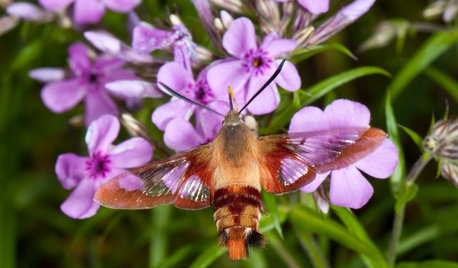tomato hornworms and blacklights
margocostas
15 years ago
Related Stories

EDIBLE GARDENSSummer Crops: How to Grow Tomatoes
Plant tomato seedlings in spring for one of the best tastes of summer, fresh from your backyard
Full Story
FARM YOUR YARD6 Things to Know Before You Start Growing Your Own Food
It takes time and practice, but growing edibles in the suburbs or city is possible with smart prep and patience
Full Story
CALIFORNIA GARDENINGCalifornia Gardener's July Checklist
Bite into tree-fresh apricots, inhale delightful garden perfumes and continue planting vegetables for a late-summer harvest
Full Story
EDIBLE GARDENSGarden BFFs? Why Your Vegetables Are Begging for Companion Plants
Foster friendships among plants for protection from pests, pollination support and color camaraderie
Full Story
GARDENING GUIDESDon’t Let These Excuses Keep You From Gardening
Stop blaming your lack of experience, space, time and funds, and get on with the joy of garden making
Full Story
EDIBLE GARDENSHow to Grow Your Own Sweet Summer Crops
This guide will help any gardener get started on growing the freshest warm-season veggies and berries for summer
Full Story
GARDENING GUIDESHummingbird or Moth? See Why You Want Clearwings Around
These fascinating moths may be helpful pollinators for your garden. Here’s how to coax them your way
Full Story
REGIONAL GARDEN GUIDESTexas Gardener's April Checklist
Get your sowing and planting on — spring brings a tantalizing array of possibilities in the garden
Full Story
SUMMER FRUITS AND VEGETABLESHow to Grow Eggplant at Home
Plant glossy purple eggplant as much for its beauty in the garden as its flavor on the plate
Full Story0
Sponsored
More Discussions






archerb
reaverg
Related Professionals
Brentwood Landscape Architects & Landscape Designers · Salem Landscape Architects & Landscape Designers · White Oak Landscape Architects & Landscape Designers · Brunswick Landscape Contractors · East Patchogue Landscape Contractors · Fuquay-Varina Landscape Contractors · Lantana Landscape Contractors · Pueblo West Landscape Contractors · Saint George Landscape Contractors · Homewood General Contractors · National City General Contractors · Summit General Contractors · Fort Collins Decks, Patios & Outdoor Enclosures · Lakewood Decks, Patios & Outdoor Enclosures · Portland Decks, Patios & Outdoor EnclosuresmargocostasOriginal Author
tom8olvr
margocostasOriginal Author
austinnhanasmom
sautesmom Sacramento
larryw
Bets
austinnhanasmom
tomakers
medcave
catman529
zebraman
chuck60
mulio
countrydoc20
ditnc
arlinek
kiddo_1
yardenman
cassieinmass
mr_potaohead
home_grower
fotogreg
sluginator
princemongo21